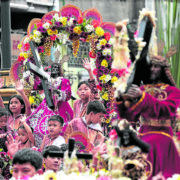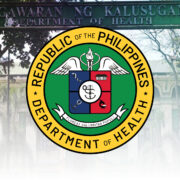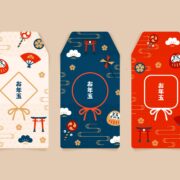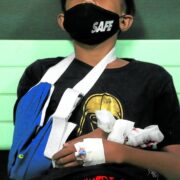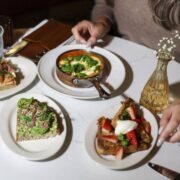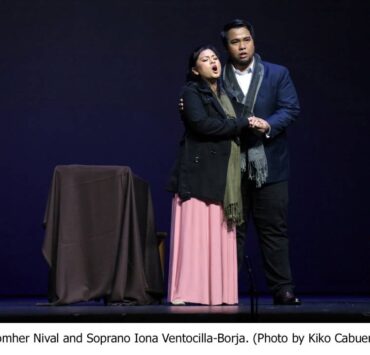Gorging on the generosity of Genova
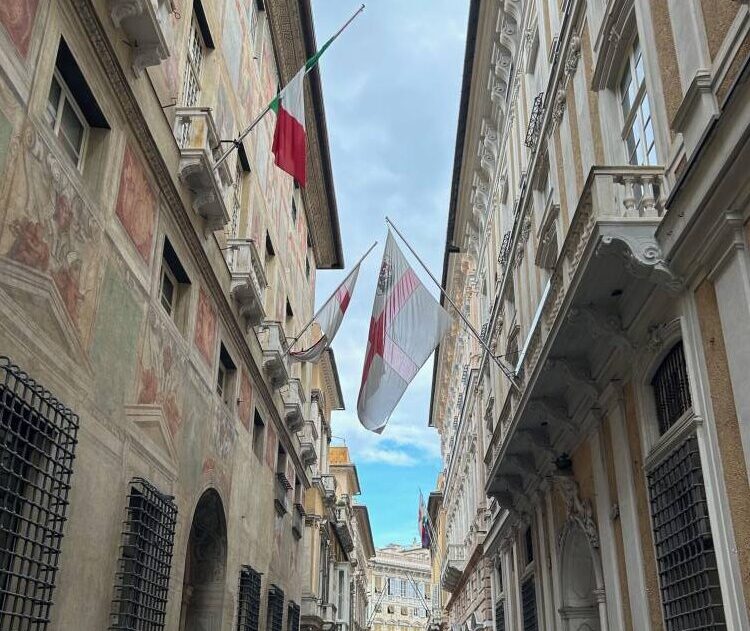
I admit, even if I knew that it was the birthplace of pesto, a sauce made of fresh basil leaves, pine nuts, garlic and olive oil, it still wasn’t enough for me to consider Genova a worthy travel detour. What actually drove my decision was my uncle’s revelation—that my surname is said to have originated in this Italian city. And so I held on to that information when I booked a train ticket from Turin to the capital of the region of Liguria, not expecting the great discoveries that lay ahead.
Based on appearances alone, Genova has a charming character, defined by its medieval and early modern maritime trade that transpired over centuries. Buildings of varying heights paint the hills, while impressive structures such as the historic aqueduct; the Romanesque Cathedral of San Lorenzo with its striped facade; the Piazza de Ferrari with its iconic bronze fountain; the Acquario, the largest in the country; and the quaint and beautiful Boccadasse beach are worth a visit and the trek.
Grand as they may be, the narrow alleys, called caruggi, which lead from one lane to even smaller ones, are the true heart of the city. The maze holds historic value, as it was made mainly for defense, making it difficult for enemy armies to pass and maneuver their way out.
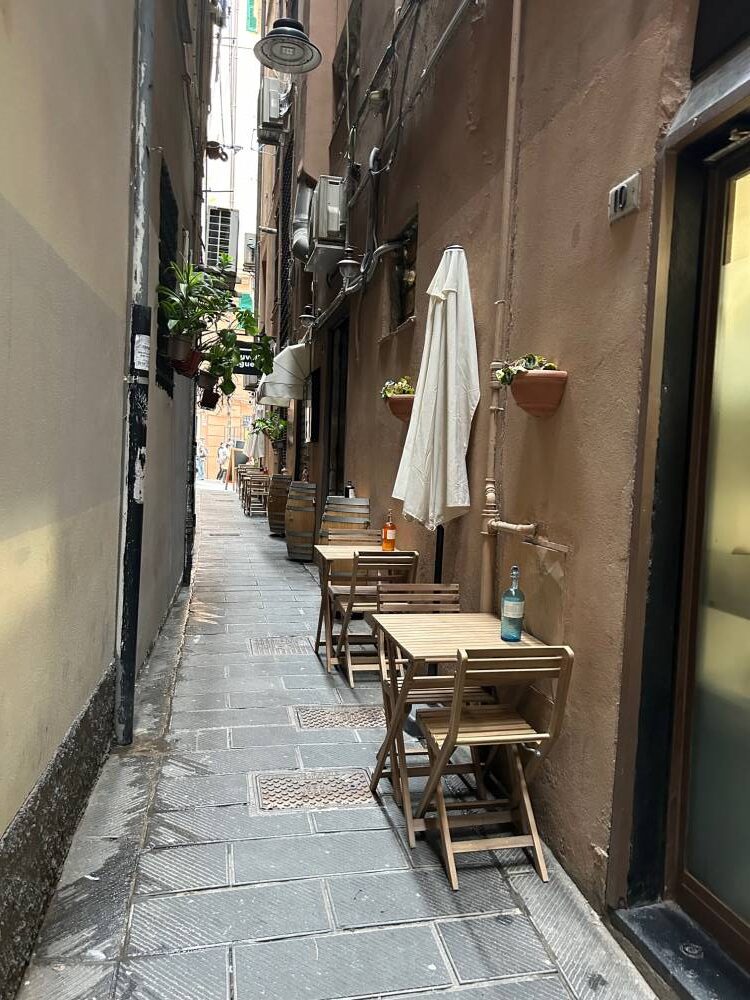
If in the past the buildings that make up the alleys housed ancient noble families, today the Renaissance edifices that crowd the city center have been converted into museums, barber shops, banks, gelaterias, public and private offices and cafés and restaurants that allow for commerce and vibrancy.
Among the popular ones is Focaccia e Dintorni, located along Via di Canneto II Curto and Via S. Lorenzo. It’s a family-run neighborhood bakery that has been open since the 1980s, with people making a beeline for beloved items that include traditional biscuits like the flower-shaped canestrelli, pandolce aka fruitcake and gobeletti filled with either chocolate, apricot jam or berries.
Flatbread frenzy
With Liguria believed to be the birthplace of traditional Italian focaccia, it’s a must to try the bakery’s focaccia Genovese, a delightful specialty that’s soft and tender on the inside, just 2 cm thick, and finished with a sprinkling of salt and a brush of olive oil. It sells many sheets of this daily, and rightfully so, as the bread is savory and satisfying enough for an on-the-go snack.
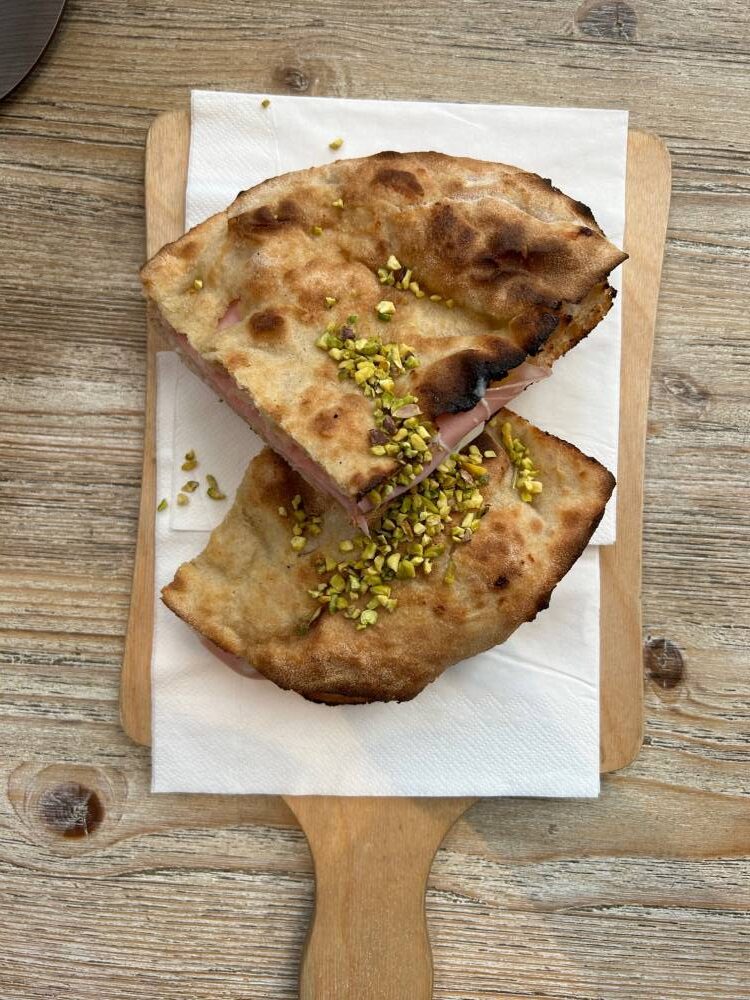
Another must-try is the focaccia col formaggio, two thin sheets of unleavened dough that sandwich creamy, melted fresh cheese. To appease cravings for this, many locals head to Locanda Tortuga, where guests can watch the crafty chef make their order in the open kitchen. Go for the mixed platter so you can have a sampling of the traditional kind, one topped with hard cheese, another crowned with ham, one that’s drizzled with truffle oil and of course, some smeared with pesto.
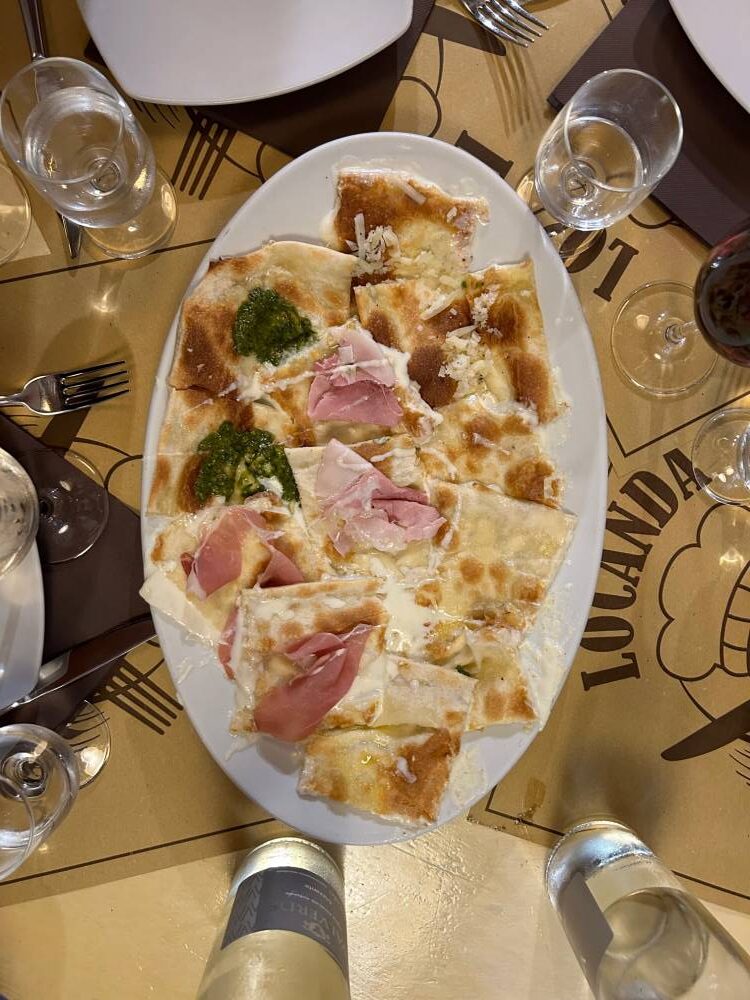
Michelin-starred chef Edoardo Ferrera has come up with a more accessible fare in Baccicin Acciughe and Pissa. As the name suggests, it has anchovies (acciughe), which comes either with salmoriglio (lemon and olive oil sauce), butter or salsa verde. It also comes as a pissaladière and a burger in squid ink buns with cheese. If you prefer something light, they have a chickpea burger with pesto and local cheese sandwich, too.
Still located in Genova’s tight alleys is an unassuming spot for sweet cravings. The Romeo Vignotti Cafe and Gelateria was founded by chocolatier Domenico Vignette over 150 years ago. His family sold it to a passionate pastry chef named Alessandro Boccardo in 1999. He, along with son Eugenio, continues Domenico’s legacy by selling premium quality handmade delicacies such as colorful sugar candies called ginevrine and gelato in milk, fruit, cheese and, of course, chocolate flavors.
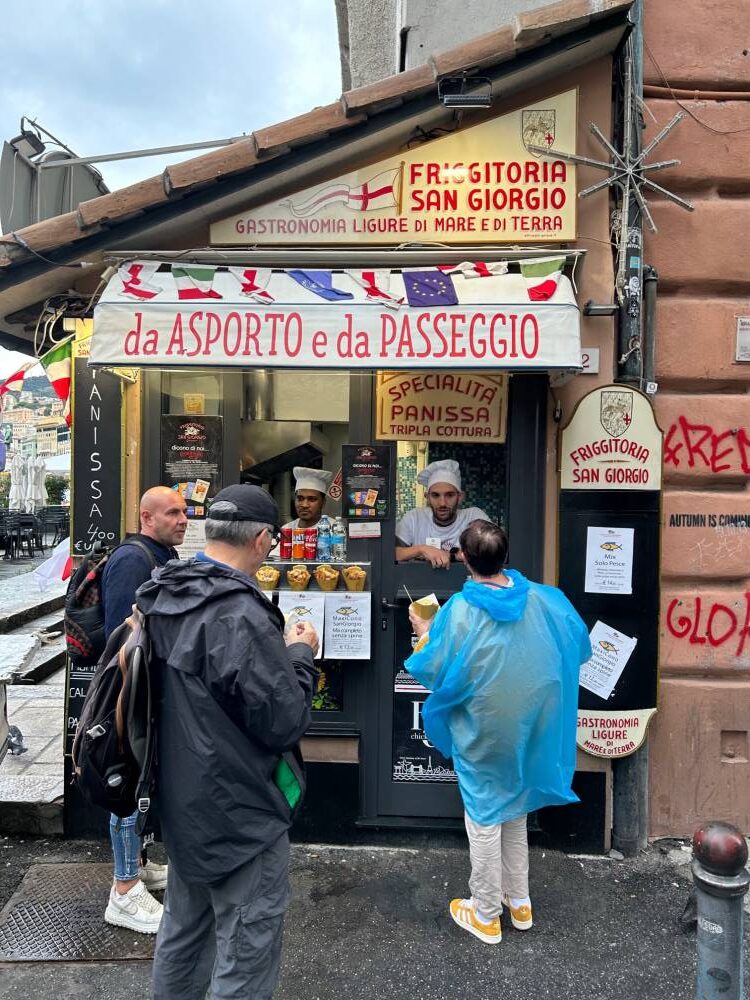
Outside the maze
Before entering the caruggi, there’s a hole-in-the-wall stall that allows people to have a taste of Genovese history. As it is a port city, the locals, back in the day, made a living by selling seafood that they caught that day. The ones that get left, mostly the small ones, they still managed to earn money from by simply frying them. That’s how the Friggitoria San Girgio started. The food comes in paper cones and one can choose between anchovies, deep-fried dough called coccoli, small octopus, squid, chickpea fritters or panissa, or a combination of all. Shower them with lemon juice and you are guaranteed gustatory pleasure.
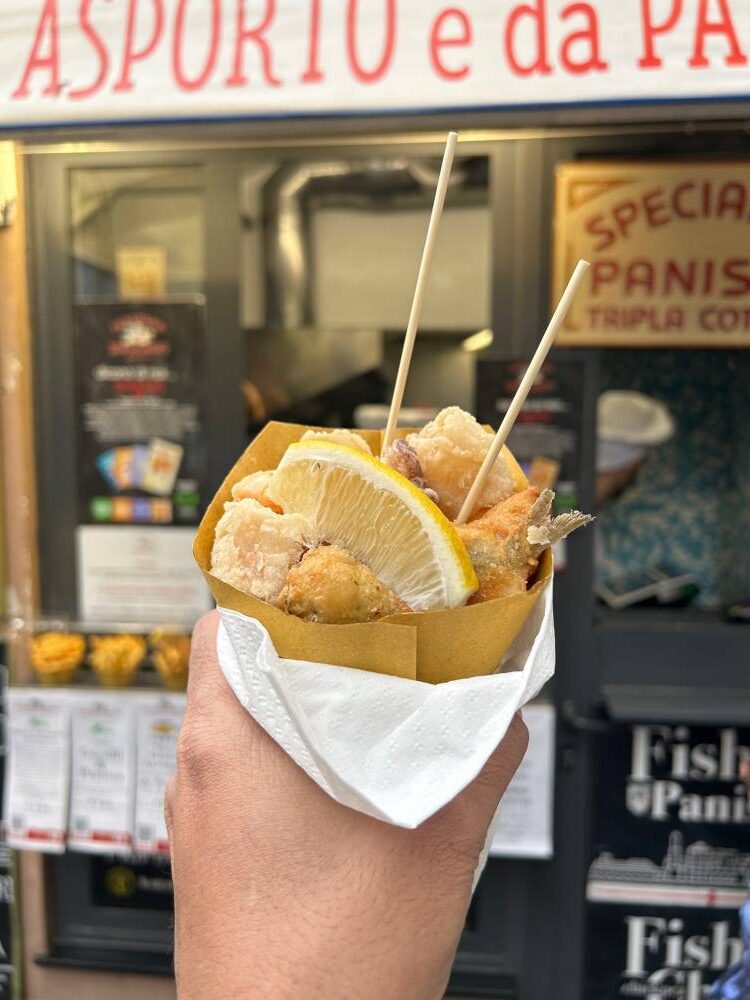
When you want options, the MOG can cover that base for you. Also known as Mercato Orientale di Genova, the circular market place is called “Orientale” because it is situated near the eastern door of the city of Genoa when it was inaugurated in 1899. There you can buy a myriad of fresh vegetables and fruits as well as cheeses and fresh seafood. After shopping, you can step further inside and into a food hall where traditional Italian fare like pizzas, pastas and fried food are on offer, as well as Japanese, Kenyan and Peruvian cuisine.
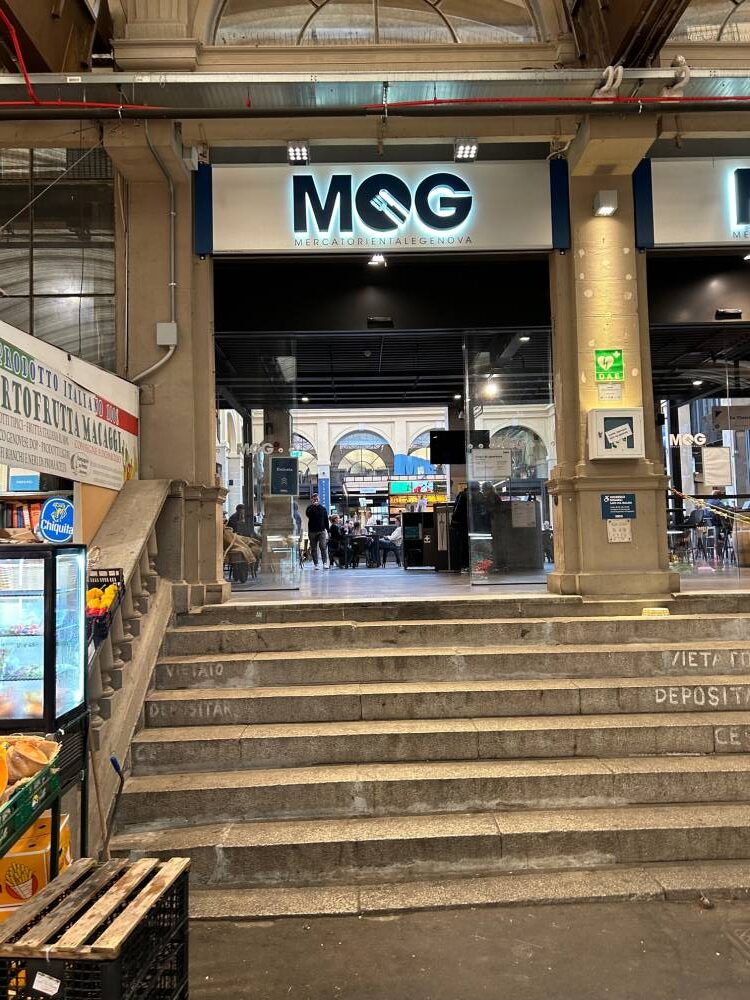
You can’t leave this city without having the best pesto. That’s why Cavour Modo 21 should be in your itinerary. This old-world Ligurian restaurant serves a good number of fried and grilled seafood as well as pasta dishes like ravioli of greens with Genovese meat sauce, penne pasta Portofino style and spaghetti in garlic, oil and hot pepper.
But if there’s one item you should definitely have, it’s the trenette, a type of narrow, flat, dried pasta from Genova, with green beans and boiled potatoes, all tossed in the resto’s award-winning pesto sauce. It’s a recipe that bagged acclaim and the top prize at the Pesto World Championship in 2014.
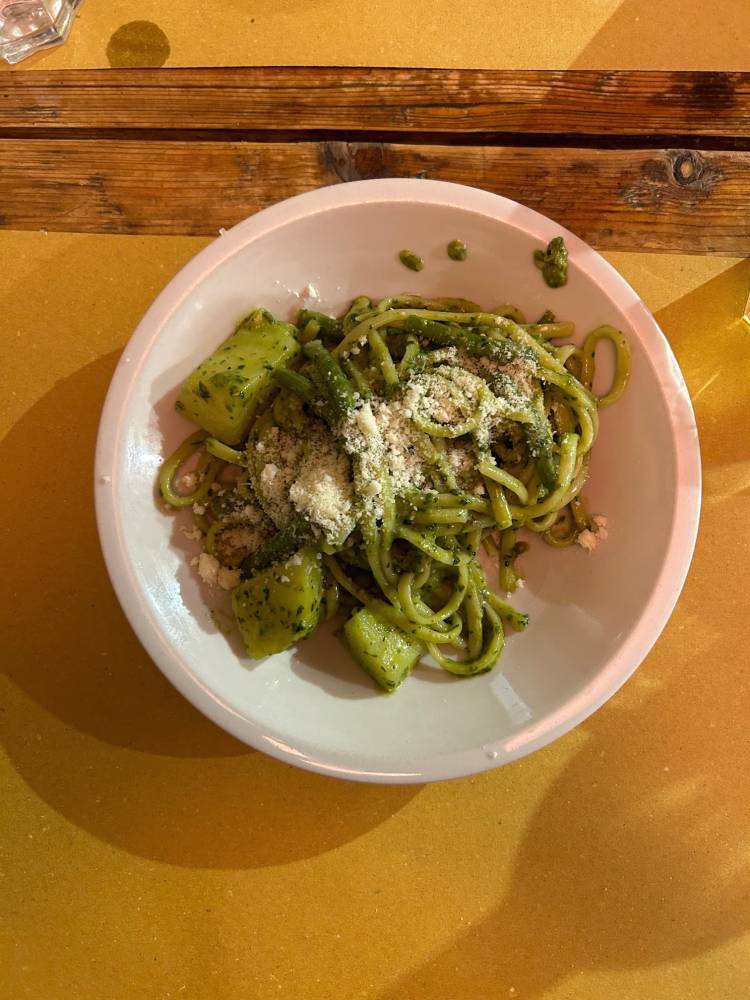
The port city of Genova has always been overshadowed by more touristy Italian places such as Rome, Venice and Milan, which is quite unfortunate as those in the know and who take a chance are the only ones greatly rewarded by the wealth in design and architecture, history and delicious food found in this humble Ligurian city.
Special thanks to Jaison Yang and Travel Warehouse Inc. and Big Sky Nation.
Angelo Comsti writes the Inquirer Lifestyle column Tall Order. He was editor of F&B Report magazine.




